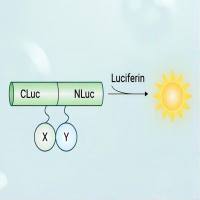Advances in noninvasive imaging technologies that allow for in vivo dynamic monitoring of cells and cellular function in living research subjects have revealed new insights into cell biology in the context of intact organs and their native environment. In the field of hematopoiesis and stem cell research, studies of cell trafficking involved in injury repair and hematopoietic engraftment have made great progress using these new tools. Stem cells present unique challenges for imaging since after transplantation, they proliferate dramatically and differentiate. Therefore, the imaging modality used needs to have a large dynamic range, and the genetic regulatory elements used need to be stably expressed during differentiation. Multiple imaging technologies using different modalities are available, and each varies in sensitivity, ease of data acquisition, signal to noise ratios (SNR), substrate availability, and other parameters that affect utility for monitoring cell fates and function. For a given application, there may be several different approaches that can be used. For mouse models, clinically validated technologies such as magnetic resonance imaging (MRI) and positron emission tomography (PET) have been joined by optical imaging techniques such as in vivo bioluminescence imaging (BLI) and fluorescence imaging (FLI), and all have been used to monitor bone marrow and stem cells after transplantation into mice. Photoacoustic imaging that utilizes the sound created by the thermal expansion of absorbed light to generate an image best represents hybrid technologies. Each modality requires that the cells of interest be marked with a genetic reporter that acts as a label making them uniquely visible using that technology. For each modality, there are several labels to choose from. Multiple methods for applying these different labels are available. This chapter provides an overview of the imaging technologies and commonly used labels for each, as well as detailed protocols for gene delivery into hematopoietic cells for the purposes of applying these specific labels to cell trafficking. The goal of this chapter is to provide adequate background information to allow the design and implementation of an experimental system for in vivo imaging in mice.






